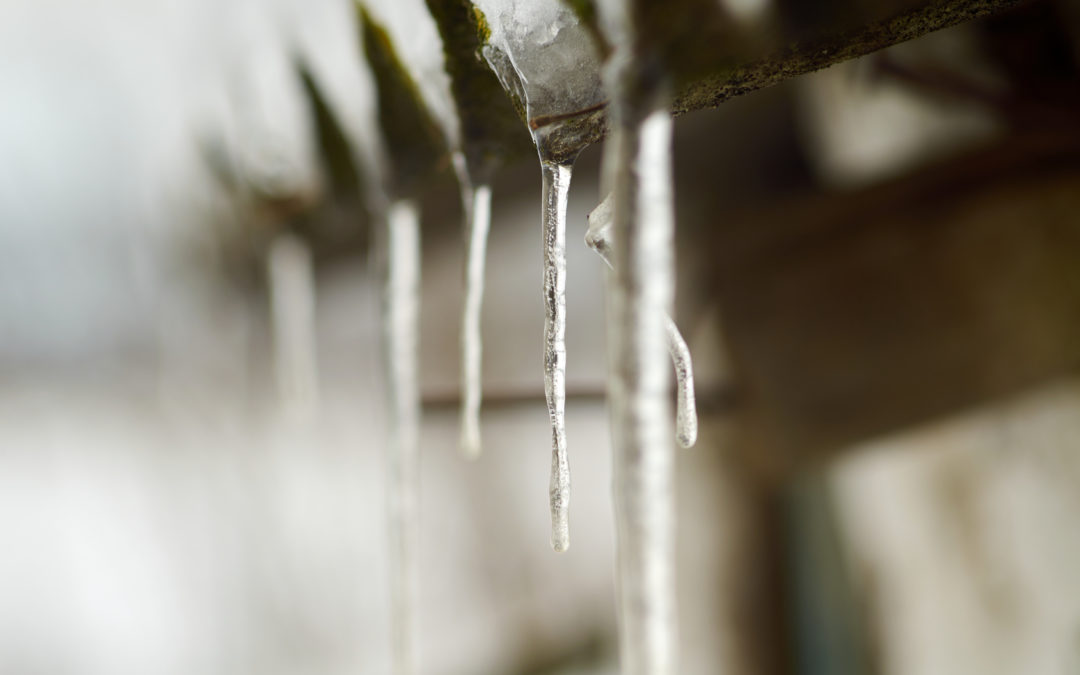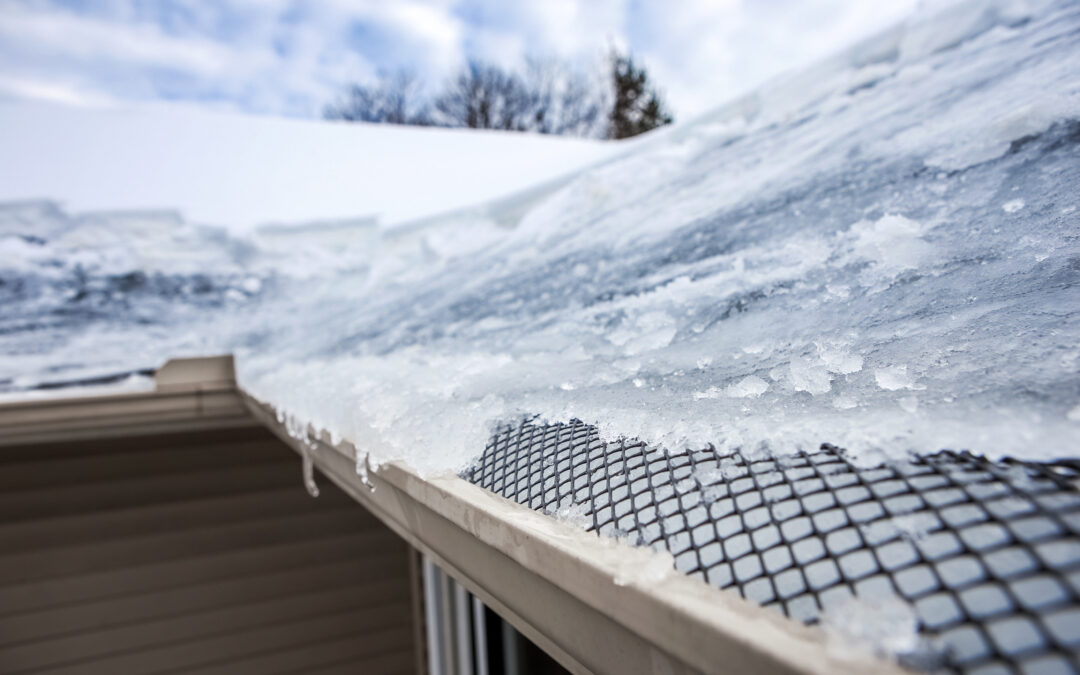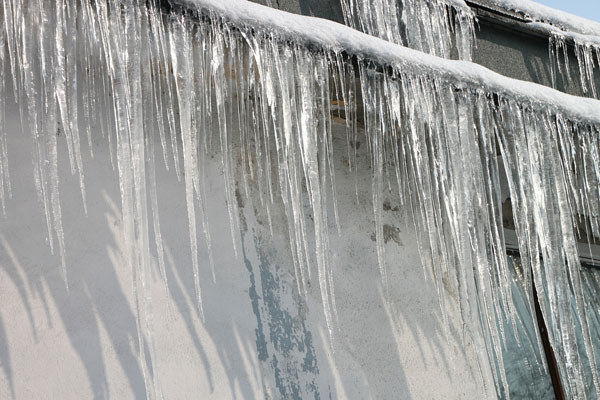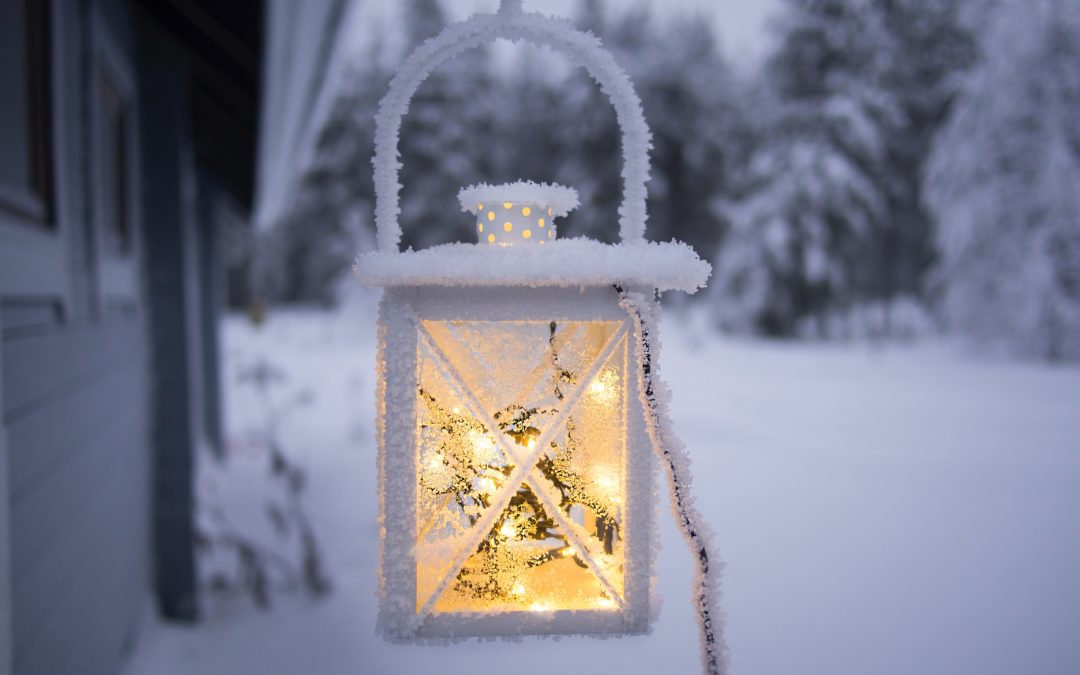


What Are Ice Dams?
While ice dams may appear to be an innocent product of winter weather, they can cause severe damage and seriously threaten your roof’s integrity. Let’s look at what ice dams are, how ice they form, and what you can do to get rid of them — or prevent them from forming in the first place.
What are Ice Dams?
Ice dams are ridges of solid ice that form on your roof’s eaves. They are caused by a difference in temperature between the underside of your roof and the roof’s surface during the colder, more snowy months of the year. Sometimes ice dams also form in gutters, stopping water and snow from moving safely off your home’s roof and instead directing it into your home. Roofs with low slopes are most susceptible to the formation of ice dams, although they can form on almost any type of roof if conditions are right.
Ice dams can be difficult to spot if you don’t know what to look for. Understanding how they form can help you identify areas you might find ice dams on your home’s roof.
Now that you know what ice dams are, let’s get into the cause and solution.
What Causes Ice Dams?
Ice dams form similar to icicles — from the movement of water that later turns to ice on your roof. However, ice dams have far more severe consequences for your roof and home. Here’s how ice dams form:
- Warm air underneath the roof melts snow on shingles.
- Water moves down the roof, melting more snow as it goes.
- Water passes down the roof slope until it reaches the eaves.
- Cool air under the roof’s eaves causes the water to refreeze.
- Layers of ice begin to build up on the eaves of the roof.
- Water with nowhere to go seeps underneath your shingles and can develop leaks or start rotting the wood of your roof.
When left unaddressed, water can seep through your roof and into your home, where it can cause severe damage. Even if you don’t notice a visible leak, moisture under the roof deck attracts mold and mildew, which may further damage and compromise your roof. If your roof has ice dams, it’s best to remove them quickly before more damage occurs.
Now that you know what causes ice dams, let’s look at what your course of action should be and how you can prevent ice dams in the future.
How to Remove Ice Dams
Let’s talk about what to do to remove ice dams by first talking about what not to do: never attempt to peel, hack, chip, or scrape ice dams directly off your roof. This method is sure to cause more harm than good. You’re more likely to break shingles or remove them altogether — which will let pooling water damage your roof and home that much faster.
If you need to deal with ice dams on your roof right now, let’s look at two approaches:
1. Cool the Underside of Your Roof
Use a fan (or multiple fans) in your attic and direct it towards the roof. The goal is to cool the underside of the roof so snow won’t melt and flow down your roof, where it can refreeze into ice dams. The downside of this method is that it isn’t effective at removing existing ice dams, but it can help reduce further damage until you can have the problem addressed by a professional.
2. Use a Chemical Deicing Agent
Use calcium chloride to melt ice dams. Never use rock salt, as it will damage your shingles and roof. Position the chemical vertically on your roof and perpendicular to the ice dams to break them up and create a path for water and snow to travel off your roof. You can hold the deicer in place by using a pair of sheer stockings. Fill the stockings with the chemical, then drape it on your roof’s eaves. The solution is simple, effective, and a good use for that extra pair of stocking you likely have lying around.
3. Ask a Professional
Call a professional if you have ice dams on your roof and can’t safely remove them. An experienced roofer will have the tools and expertise to deal with ice dams safely and effectively and can help talk through your options for preventing them in the future.
How to Prevent Ice Dams
If you want to save your roof from the dangers of ice dams, here are a few methods you can use to prevent them in the future.
1. Remove Snow From Your Roof
To prevent ice dams, you can remove snow before it melts and refreezes into ice by carefully raking it off your roof. This method is labor-intensive, and if you’re not careful, you could cause damage to your shingles by scraping or pulling them off. It’s best to have this done by someone with experience — or find a more permanent solution.
Alternatively, you can use heated cables to melt the snow before it can freeze into ice dams. Arrange heated cables in a zigzag pattern along the eaves of your roof and attach them with clips. Cable lines are effective at keeping ice dams from forming but are a temporary solution at best. They don’t go after the root cause of ice dams.
2. Insulate Your Roof
Adding insulation layers to your attic floor can prevent ice dams from forming. This traps heat in the living areas where it belongs and keeps it away from your roof, where it could melt snow and lead to ice dams. A professional roofer can assess your home’s level of insulation and see where vulnerable areas could use more protection.
3. Ventilate Your Roof
Adding proper ventilation to the roof, particularly under the ridge and eaves, can help prevent ice dams. Extra ventilation circulates cooler air to the underside of the roof, preventing any snow on your roof from melting and ice dams from occurring and building up in the same places every year.
A combination of insulation and ventilation is recommended to effectively prevent ice dams. Contact your local roofer to help assess what your roof needs.
When to Replace Your Roof Due to Ice Damage
Whether your roof is due to be replaced soon anyway, or you’re tired of dealing with ice dams and damage every winter, you may consider replacing your roof with one that is not susceptible to the formation of ice dams — like a standing seam metal roof.
Standing seam metal roofs don’t provide traction for ice dams to form, so water, snow, and ice are all able to drain off and away from your roof easily. Although ice dams can still form on low-sloping metal roofs that don’t have proper insulation and ventilation, it’s very rare.
The best defense against ice is to outfit your home with the best system to limit the time that snow sits on your roof and to prevent melting and refreezing. If you’re worried about ice dams on your roof this winter, talk to the Werner Roofing team. We’re ice dam experts, and we’re happy to come out, take a look at your roof, and offer a few suggestions or help you get rid of ice dams on your roof.

Ice Dams in Gutters
Have you noticed ice hanging over the edge of your home’s roof? These ice dams can cause some serious damage to your home if they’re not taken care of.
Ice dams are occur when snow melts on your roof and then refreezes. Heat escapes through your attic space and warms your roof from the interior allowing the melting to occur. Contrary to popular belief, ice dams are not caused by gutters, although gutter can certainly add to the problem.
So what exactly is causing the ice dams?
First, like we mentioned before, the heat from the interior of your home leaks through the ceiling and attic, which increases the temperature of your roof from the interior. Once the shingles of your home warm to above 32 degrees Fahrenheit, the snow will melt.
Second, this melted snow will make its way toward the edges of your roof and gutters. Eventually it will hit an area of your roof that does not have insulation under it, meaning that it will likely be below 32 degrees Fahrenheit and refreeze the water.
Third, this process continues over and over. The ice dam will increase in size allowing water to pool in between the ice dam and your roof.
Fourth, This pool of water that is created is what will threaten your home the most. When water is allowed to sit on your home’s roof it can start leaking through your shingles into the interior of your home and causing rot.
Ice dams are not completely preventable because the melter will sometimes instantly freeze once it hits those colder areas of your roof. However, you can increase the prevention of ice dams by ensuring the water has somewhere to go when it does not instantly freeze. This means making sure your gutters are clear of debris and leaves.

Snow & Ice Dam Removal LP
CALL US TODAY! 616-844-5382 Snow & Ice Dam Removal Services Your roof is one of the most important elements of your home. It’s what keeps the cold out, the heat in, and keeps you safe and dry. When winter hits, there are a lot of potential threats to your roof,...

